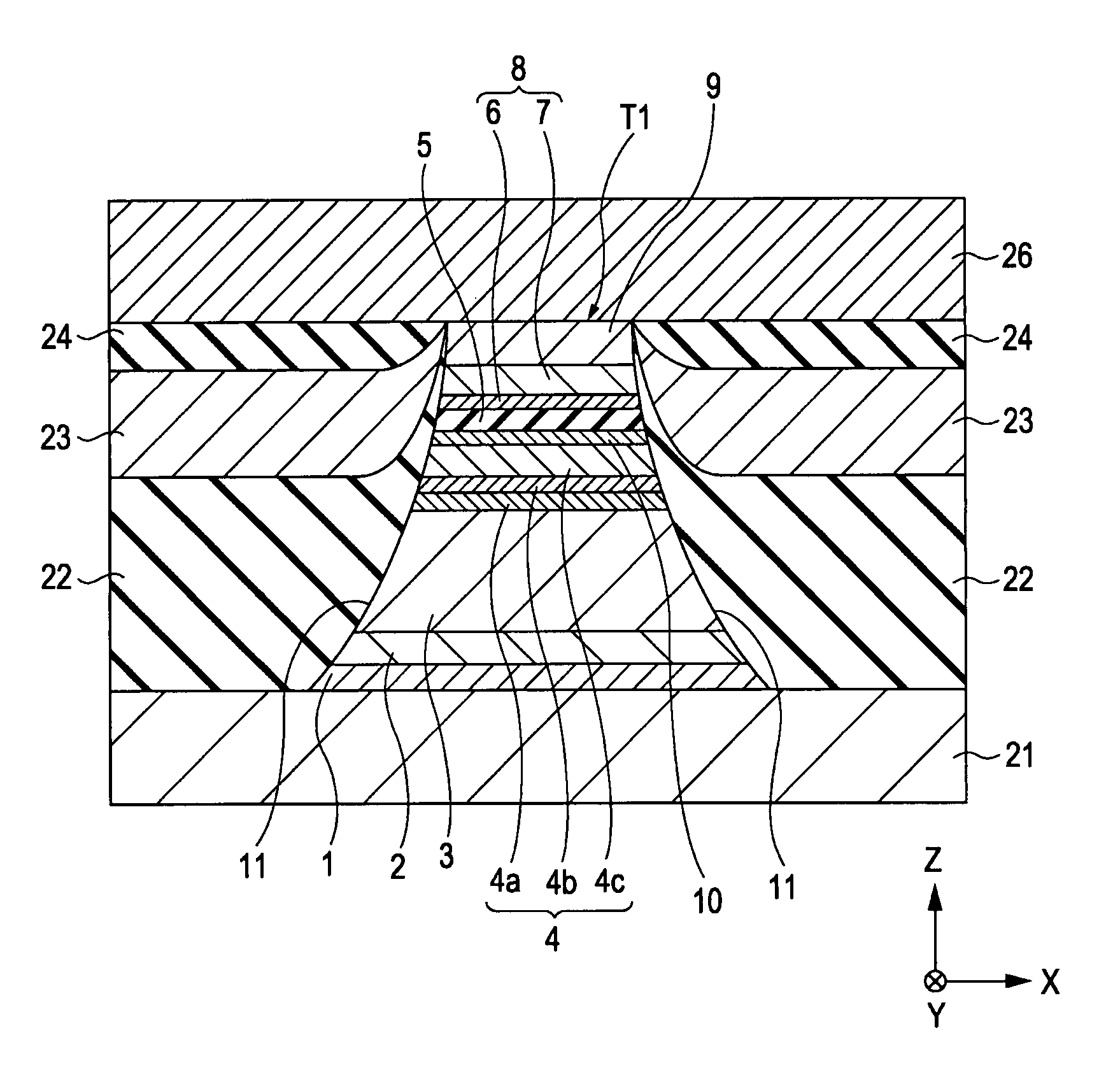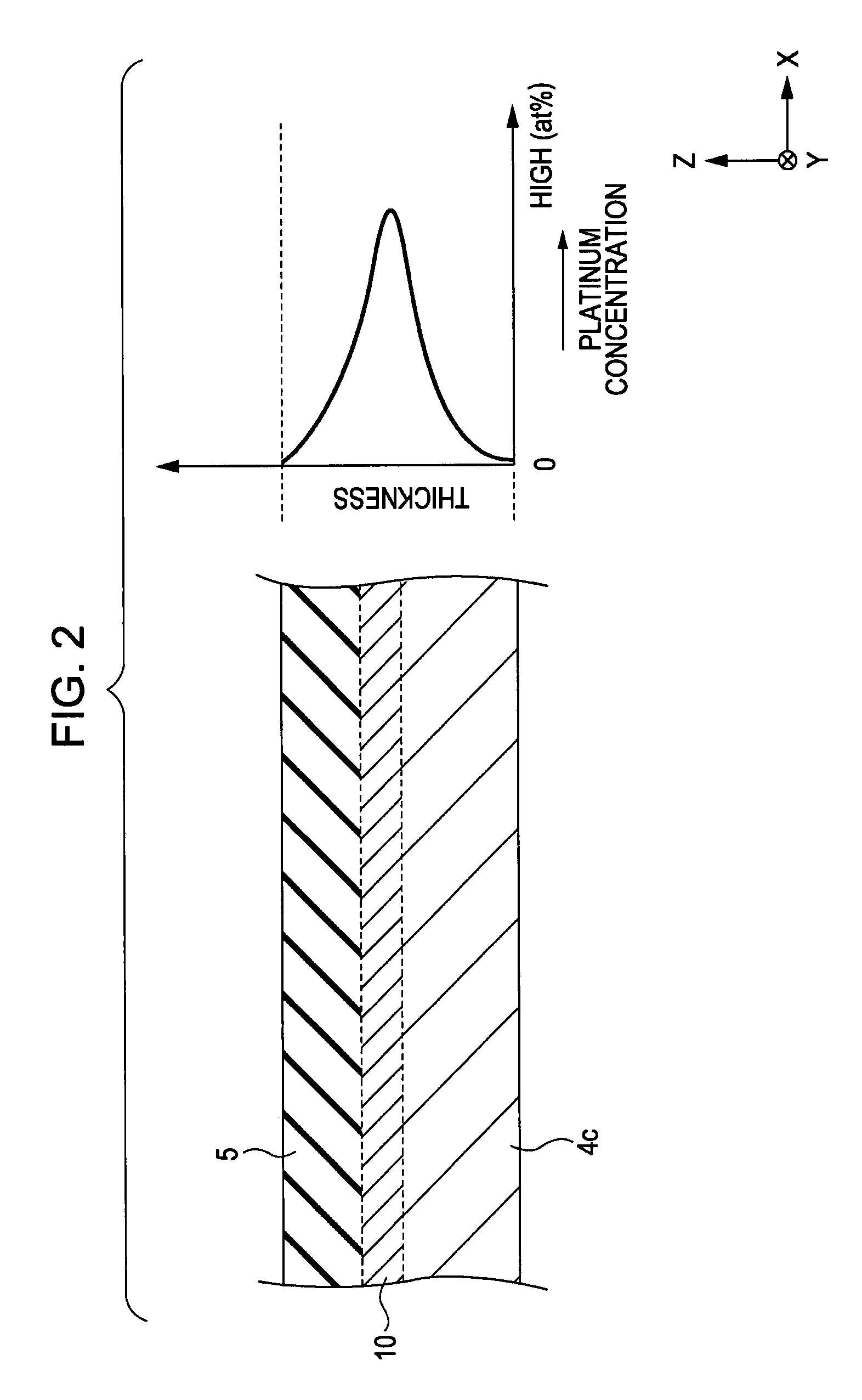Tunneling magnetic sensor including platinum layer and method for producing the same
a magnetic sensor and platinum layer technology, applied in the field of magnetic sensors, can solve the problems of reducing operating stability, large variation in sensor resistance, unstable operation, etc., and achieve the effect of reducing the absolute value of vcr, improving operating stability, and high resistance change rate (r/r)
- Summary
- Abstract
- Description
- Claims
- Application Information
AI Technical Summary
Benefits of technology
Problems solved by technology
Method used
Image
Examples
examples
Experiment for VCR
[0096]Tunneling magnetic sensors shown in FIG. 1 were produced. First, a total of six samples were prepared, including Comparative Example 1, Examples 1 to 4, and Reference Example 1.
[0097]The basic film structure of the samples included, from bottom to top, the base layer 1, the seed layer 2, the antiferromagnetic layer 3, the pinned magnetic layer 4, the insulating barrier layer 5, the free magnetic layer 8, and a protective layer. The base layer 1 was formed of tantalum and had an average thickness of about 30 Å. The seed layer 2 was formed of NiFeCr and had an average thickness of about 50 Å. The antiferromagnetic layer 3 was formed of IrMn and had an average thickness of about 70 Å. The first pinned magnetic layer 4a was formed of Co70at %Fe30at % and had an average thickness of about 14 Å. The nonmagnetic intermediate layer 4b was formed of ruthenium and had an average thickness of about 9.1 Å. The second pinned magnetic layer 4c was formed of Co90at % Fe10at...
PUM
| Property | Measurement | Unit |
|---|---|---|
| insulating | aaaaa | aaaaa |
| magnetization | aaaaa | aaaaa |
| external magnetic field | aaaaa | aaaaa |
Abstract
Description
Claims
Application Information
 Login to View More
Login to View More - R&D
- Intellectual Property
- Life Sciences
- Materials
- Tech Scout
- Unparalleled Data Quality
- Higher Quality Content
- 60% Fewer Hallucinations
Browse by: Latest US Patents, China's latest patents, Technical Efficacy Thesaurus, Application Domain, Technology Topic, Popular Technical Reports.
© 2025 PatSnap. All rights reserved.Legal|Privacy policy|Modern Slavery Act Transparency Statement|Sitemap|About US| Contact US: help@patsnap.com



